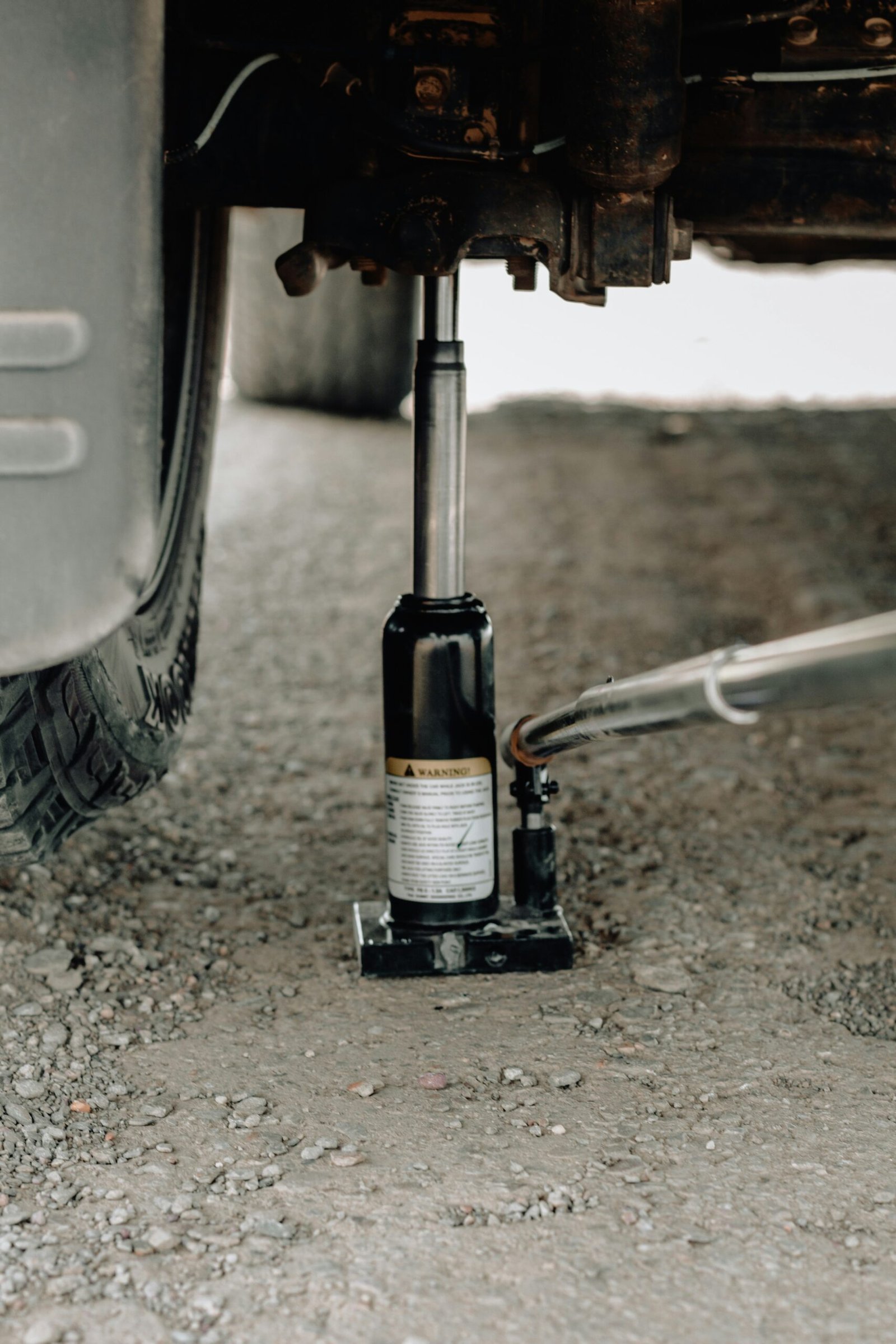Understanding Lifted Trucks
A lifted truck is defined by modifications that increase its height significantly above the factory specifications. This enhancement is typically achieved through various lift kits, which can range from leveling kits that raise only the front of the vehicle, to full suspension kits that elevate both the front and rear. These kits come in multiple forms, including body lift kits, suspension lift kits, and axle swaps, each designed to meet specific performance and aesthetic goals. Importantly, the choice of kit influences not only the truck’s height but also its weight distribution and overall handling characteristics.
One of the primary benefits of lifting a truck is improved ground clearance, which enhances the vehicle’s ability to navigate rough terrains, thereby making it more suitable for off-road adventures. Additionally, a lifted truck can gain a commanding presence on the road, appealing to those who appreciate a more aggressive aesthetic. Moreover, lifting a truck often allows for the installation of larger tires, which can further improve traction and off-road capability.
However, alongside these benefits, lifting a truck comes with potential drawbacks. Increased height can affect the vehicle’s center of gravity, leading to altered driving dynamics. Depending on the lift kit used, there may be repercussions on ride quality and loading capacity. Also, drivers may experience changes in fuel efficiency, as lifted trucks can be less aerodynamic than their stock counterparts. Coupling these considerations with the weight added by larger tires is essential for choosing the right jack capable of supporting the unique needs of a lifted truck.
In conclusion, understanding the characteristics, benefits, and drawbacks of lifted trucks is crucial for owners. As such, selecting the appropriate jack becomes essential for maintaining these vehicles, ensuring safe and efficient service when it comes to repairs or maintenance work.
Importance of Using the Right Jack
Choosing the right jack for a lifted truck is essential for ensuring both safety and efficiency during maintenance tasks. A lifted truck typically has a higher center of gravity and may weigh significantly more than a standard vehicle. Consequently, utilizing a jack that is not specifically designed to support such a setup can lead to several safety hazards. For instance, an inadequate jack may fail under the weight, posing serious risks to individuals in the vicinity.
When selecting a jack, one must consider the proper weight capacity that matches or exceeds the weight of the lifted truck. The weight capacity of the jack should account not only for the vehicle’s weight but also for any additional modifications that might have been made. Failure to choose a jack with the appropriate weight limit can result in instability during use, which may cause the jack to collapse.
Stability is another critical factor when dealing with lifted trucks. A jack that is too narrow, or lacks quality construction may wobble or tip over, particularly when lifting a higher vehicle. It is advisable to opt for jacks that offer a wider base and superior build quality to ensure solid support. Additionally, some jacks come equipped with features such as rubber pads or adjustable lifting heights which add to their usability and safety.
The implications of using the wrong type of jack can be severe. Not only can it lead to personal injury, but it can also result in costly damage to the vehicle. This is why investing in the right jack tailored for your lifted truck is not just a matter of convenience but a necessity. Being informed about these risks can help in making a wise decision, ensuring a safe and effective lifting experience.
Types of Jacks Suitable for Lifted Trucks
When it comes to lifted trucks, selecting the right jack is crucial for ensuring safety and efficiency during maintenance or repair tasks. There are several types of jacks available, each with unique features that cater to different needs. The three primary types of jacks suitable for lifted trucks are floor jacks, bottle jacks, and high-lift jacks.
Floor jacks are among the most commonly used options for lifted trucks. They usually have a lower profile, allowing for easier placement under the vehicle. Most floor jacks can lift several tons, making them ideal for trucks with substantial weight. Additionally, they often come equipped with features like adjustable saddle heights and rapid lift mechanisms, which enhance usability. However, one downside is that floor jacks can be bulkier and may require more storage space.
Bottle jacks are another popular option, particularly known for their compact design. These jacks are highly portable and can generate significant lifting power due to their hydraulic nature. They work by using a vertical lifting motion, which can be beneficial in tight spaces. However, bottle jacks typically have a limited range of lifting height compared to floor jacks, making them less suitable for very tall lifted trucks.
High-lift jacks, or farm jacks, are specially designed for off-road vehicles and are capable of lifting trucks to significant heights. These jacks are ideal for situations where traditional jacks may not provide sufficient lift. High-lift jacks offer great versatility for lifting, pulling, or winching; however, they can be more challenging to operate and require a bit more training for safe use. Furthermore, their size can pose storage challenges.
Ultimately, choosing the right type of jack for a lifted truck depends on the specific requirements, including the height of the truck, weight considerations, and the intended use. Assessing the features, pros, and cons of each jack type can help ensure that users make an informed decision for their lifting needs.
Key Features to Look for in a Jack

When selecting a jack for a lifted truck, various key features must be considered to ensure it meets your specific needs. One of the most critical aspects is the lifting capacity. It is essential to choose a jack that can comfortably handle the weight of your truck, including any modifications or added accessories. A jack with insufficient lifting capacity could compromise safety and efficiency during maintenance tasks.
The lifting height is another important feature to evaluate. Lifted trucks typically require jacks that can elevate the vehicle to greater heights compared to standard vehicles. Ensure that the jack you select has an adjustable range that accommodates your truck’s clearance without forcing you to compromise on safety or stability.
Construction materials play a vital role in the durability and reliability of a jack. Generally, jacks made of high-strength steel or aluminum are preferred due to their resilience and reduced weight, which enhances portability. However, it is crucial to balance weight and strength, especially if you plan on transporting the jack frequently.
Size and portability are also significant considerations. A compact jack may be easier to transport and store, but it must not underperform in lift capacity. On the other hand, a larger jack may offer more stability but can be cumbersome. Assess your specific requirements such as the frequency of use and storage availability to find the right balance.
Lastly, safety features should never be overlooked. Look for jacks equipped with sturdy base plates, safety valves, and anti-slip pads to prevent accidents during use. These features enhance the overall safety performance of the jack, making it a reliable tool for your lifted truck maintenance tasks.
Recommendations for Specific Models
When selecting a jack for a lifted truck, it is crucial to choose one that can handle the added height and weight. Here, we provide a selection of highly recommended jacks, categorized into budget, mid-range, and high-end options to cater to varying needs and financial constraints.
For budget-conscious individuals, the Torin Big Red T83006 hydraulic floor jack stands out. This model boasts a lifting capacity of 3 tons and features a low profile that can fit under most lifted trucks. Weighing only 50 pounds, it is easily portable, yet strong enough to handle significant loads. User reviews commend its reliability and performance, making it an excellent entry-level choice for those who need a dependable lifting solution without breaking the bank.
In the mid-range category, the Blackhawk B6350 is a popular choice among truck owners. With a lifting capacity of 3.5 tons, this jack is designed specifically for taller vehicles. Its built-in safety features, such as the overloaded protection system, provide peace of mind during operation. Many users appreciate its sturdy construction and positive reviews highlight its ability to lift lifted trucks with ease. Its combination of affordability and functionality makes it an ideal option for those seeking a robust yet reasonably priced jack.
For those willing to invest in a high-end product, the Sunex 6602LP is a premium choice. This aluminum floor jack provides a remarkable lifting capacity of 2 tons and has a low profile, making it suitable for modified vehicles. Its lightweight design and durable materials ensure longevity, alongside fast lifting speeds that save time during tire changes or maintenance. Testimonials reveal that users enjoy its smooth operation and reliability, solidifying its position as a top-tier jack for lifted trucks.
In conclusion, selecting the right jack for your lifted truck is essential to ensure safety and efficiency while performing maintenance. By considering the recommendations provided, you can make an informed decision tailored to your preferences and requirements.
Safety Tips When Using a Jack
Utilizing a jack for servicing a lifted truck can be a straightforward task, but it is imperative to prioritize safety throughout the process. Foremost, ensuring the proper placement of the jack is vital. The vehicle’s manual should be consulted to identify designated lifting points. These points are specifically designed to withstand the weight and stress of lifting. Placing the jack incorrectly can lead to instability, resulting in potential accidents or damage.
Once the jack is in the correct position, secure lifting techniques must be employed. Ascertain that the jack itself is rated appropriately for the weight of the lifted truck. Regularly inspecting the jack for any signs of wear or damage before use can also prevent dangerous failures during lifting. When operating the jack, do so at a steady pace, allowing ample time for the truck to rise fully before performing any tasks underneath it.
Handling loads wisely is another crucial consideration when using a jack. If any additional tools or parts are required while working under the truck, have them within reach before commencing work. This minimizes the risk of reaching or stretching while under a lifted vehicle, which can lead to loss of balance or unsafe situations. It is also advisable to use jack stands after the truck is raised. Jack stands provide an extra level of support and prevent any possibility of the jack failing.
Lastly, having a second person available can be exceedingly beneficial, especially when working with a lifted truck. A companion can provide assistance in monitoring the surroundings and ensuring that the lifting process is conducted safely. This extra set of eyes can also help spot potential hazards or mishaps that one might overlook. By adhering to these safety guidelines, you can ensure a smoother and safer experience when using a jack on your lifted truck.
Common Mistakes to Avoid
When selecting a jack for a lifted truck, numerous truck owners unintentionally commit errors that could lead to significant safety concerns or equipment failure. One prevalent mistake is underestimating the weight capacity of the jack. It is vital to assess the weight of the lifted truck accurately, considering any modifications or add-ons that may have increased its overall weight. Jacks come with specific weight limits, and using a jack that cannot accommodate the truck’s weight poses substantial risks, including the potential for collapse during lifting.
Another common issue stems from neglecting maintenance. Regular inspection and servicing of jacks are essential to ensure their longevity and reliability. A jack that has not undergone periodic checks may have structural deficiencies or leaks in its hydraulic system, compromising its ability to perform safely. Owners should develop a routine maintenance schedule to verify that all components are functional, particularly before using the jack for critical tasks.
Improper jack placement is also a frequent mistake that can lead to accidents or damage to the vehicle. Many truck owners may place the jack on unstable or unapproved areas of the lifted truck, leading to tipping or slippage while raising the vehicle. It is crucial to consult the truck’s user manual to find the designated lifting points and to ensure the jack is positioned correctly on a stable, flat surface. This practice not only enhances safety but also aids in effective lifting.
By recognizing these common errors—underestimating weight capacity, neglecting maintenance, and improper jack placement—truck owners can enhance their safety and improve their overall experience while using a jack for their lifted trucks. Adhering to these guidelines will significantly reduce the risk of mishaps and ensure a more successful lifting operation.
Maintenance and Care for Your Jack
Proper maintenance and care of your jack are essential to ensure its longevity and optimal functionality, especially for lifted trucks that demand high performance. Regular routine checks should be conducted to monitor the integrity of the jack. Inspect the hydraulic fluid levels, as low fluid can compromise the jack’s effectiveness. Additionally, assess for any leaks or damages in the hoses and seals, which could hinder its operation. It is advisable to perform these checks every few months or before any significant use.
Cleaning the jack is another crucial aspect of maintenance. Dirt and grime can accumulate over time, affecting its mechanical parts. Utilize a damp cloth to wipe down the exterior, and ensure that the lifting mechanism is free from debris. For stubborn stains or rust, a gentle abrasive cleaner can be used, followed by a protective lubricant to safeguard against corrosion. Ensuring the jack is clean not only maintains its aesthetic but also extends its functional life.
Storage also plays a vital role in jack care. Always store the jack in a dry, temperature-controlled environment to mitigate the risks of rust and material wear. Avoid leaving the jack exposed to external elements, as moisture and extreme conditions can damage its components. Furthermore, consider creating a dedicated space in your garage or toolbox for the jack to prevent accidental falls or impacts that could lead to malfunctions.
Lastly, it is essential to know when to replace parts or the entire jack. If you notice persistent issues despite regular maintenance, such as difficulty in raising or lowering, it may be time to consult a professional. Frequent repairs might indicate the need for replacement. Prioritizing these maintenance steps will ensure your jack remains reliable for all lifting tasks associated with your lifted truck.
Conclusion
In this blog post, we have discussed the various factors that are essential when choosing the right jack for a lifted truck. Selecting an appropriate jack is not merely a matter of convenience; it is a critical aspect of ensuring both safety and efficiency during maintenance tasks. A lifted truck typically requires a higher lifting capacity, and therefore, it is imperative to consider the specific height requirements of your vehicle before making a purchase. This means understanding the specifications of both your truck and the jack to ensure compatibility.
Furthermore, we emphasized the importance of jack type. Hydraulic jacks, floor jacks, and bottle jacks each have unique advantages, making them suitable for different situations. For instance, hydraulic jacks are renowned for their ease of use and efficient lifting mechanisms, particularly noteworthy for heavier lifted trucks. Conversely, bottle jacks, while compact, can also provide significant lifting power. Thus, the choice largely depends on individual preferences and the particular needs of your truck.
Another aspect highlighted in our discussion was the necessity of safety features. As with any equipment, it is crucial to prioritize safety to protect both the user and the vehicle. Features such as a sturdy base, locking mechanisms, and proper weight ratings ensure that the jack you choose can safely handle the specific requirements of your lifted truck.
Ultimately, the decision on which jack to select should stem from a combination of understanding your lifted truck’s needs and a commitment to safety and reliability. By considering these factors, you can contribute to the well-being of your vehicle and ensure a safer experience during maintenance and repairs.

